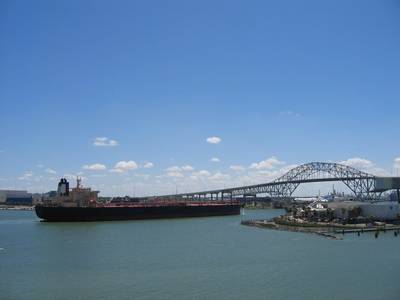US O&G Industry Reaps the Benefits of International Trade
The United States exported record quantities of natural gas, propane, gasoline, distillate fuel oil and light crude last year while continuing to import the heavy oils needed by its refineries.
Record propane exports eliminated a surplus and returned stocks to average levels despite low heating demand. ("Increasing exports contribute to large draw on propane inventories this winter", EIA, March 17)
Exports are also starting to reverse a surplus of domestically refined gasoline and distillate fuel oil despite lacklustre demand for both at the start of 2017.
Most of the natural gas and other fuels have been sold to Latin America, where local producers and refineries have been unable to keep up with growing consumption.
As a result of the shale revolution, the United States has emerged as the dominant supplier in an increasingly integrated hemispheric fuel market owing to the efficiency and competitiveness of its Gulf Coast refineries. ("Latin America struggles to stem pricey fuel imports", Reuters, March 16)
Free trade in both crude and refined fuels, as well as in natural gas, has played a critical role in helping U.S. shale producers and refiners to weather the slump in oil and gas prices since 2014.
The United States has benefited from rising exports even in commodities such as crude where it remains a large net importer overall.
Crude exports averaged 520,000 barrels per day (bpd) in 2016, up from 465,000 bpd in 2015 and just 25,000 bpd in 2006.
Exports are still outnumbered more than 15:1 by imports, which averaged almost 7.9 million bpd in 2016, according to the U.S. Energy Information Administration.
But exports have enabled shale producers to avoid a refinery bottleneck and realise higher prices for their oil than would have been possible in the domestic market.
Most U.S. refineries are configured to run on a medium-sour blend of crude with an API gravity of around 31-33 degrees and an average sulphur content of about 1.5 percent.
Crude from the main shale plays is mostly lighter, with an API gravity of 40 degrees or more, and contains less than 1 percent sulphur.
U.S. refiners have mostly replaced imported light crude with domestic shale oil, resulting in a sharp drop in light crude imports especially from Africa.
Refiners have blended light domestic crude with more heavy sour crudes imported from Canada and the Middle East to maintain their target API gravity and sulphur content.
Surplus domestic crude, mostly light and sweet, that U.S. refineries cannot absorb even with blending is being exported in record volumes to refiners as far away as Asia.
Blending explains the apparent paradox that U.S. crude imports and exports have both been rising at the same time.
Trade is enabling U.S. refiners to make best use of their equipment and maximise their fuel production and sales to customers at home and overseas.
Strong refinery runs coupled with growing exports of shale oil have avoided a domestic crude bottleneck and boosted prices for shale producers, eliminating the big discounts seen for domestic oil before 2013.
Despite occasional complaints about the continued importation of Middle East crude, trade has provided critical export markets for U.S. refiners and kept refineries operating at record rates.
Exports have been even more important for gas producers, struggling with back to back warm winters in 2015/16 and 2016/17.
Exports likely avoided an even worse price crisis in the natural gas industry during the winter of 2016/17 that would likely have bankrupted many gas-focused shale drillers.
The United States is expected to become a net exporter in 2018 thanks to the rising number of liquefaction terminals. ("Liquefied natural gas exports expected to drive growth in U.S. natural gas trade", EIA, Feb. 22)
Growing exports, as much as cost cutting and improving efficiency, are driving the next stage in the American energy revolution.







